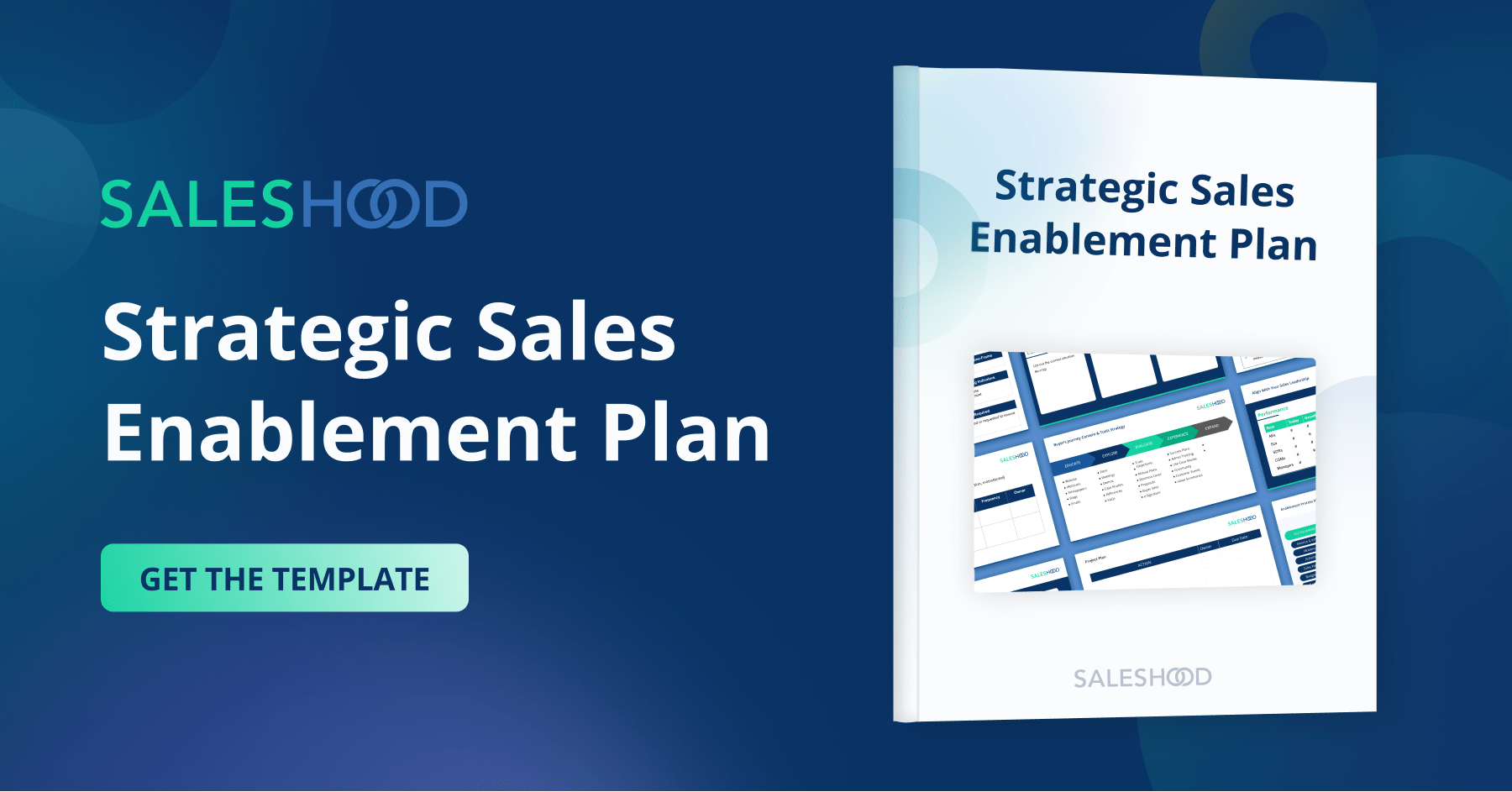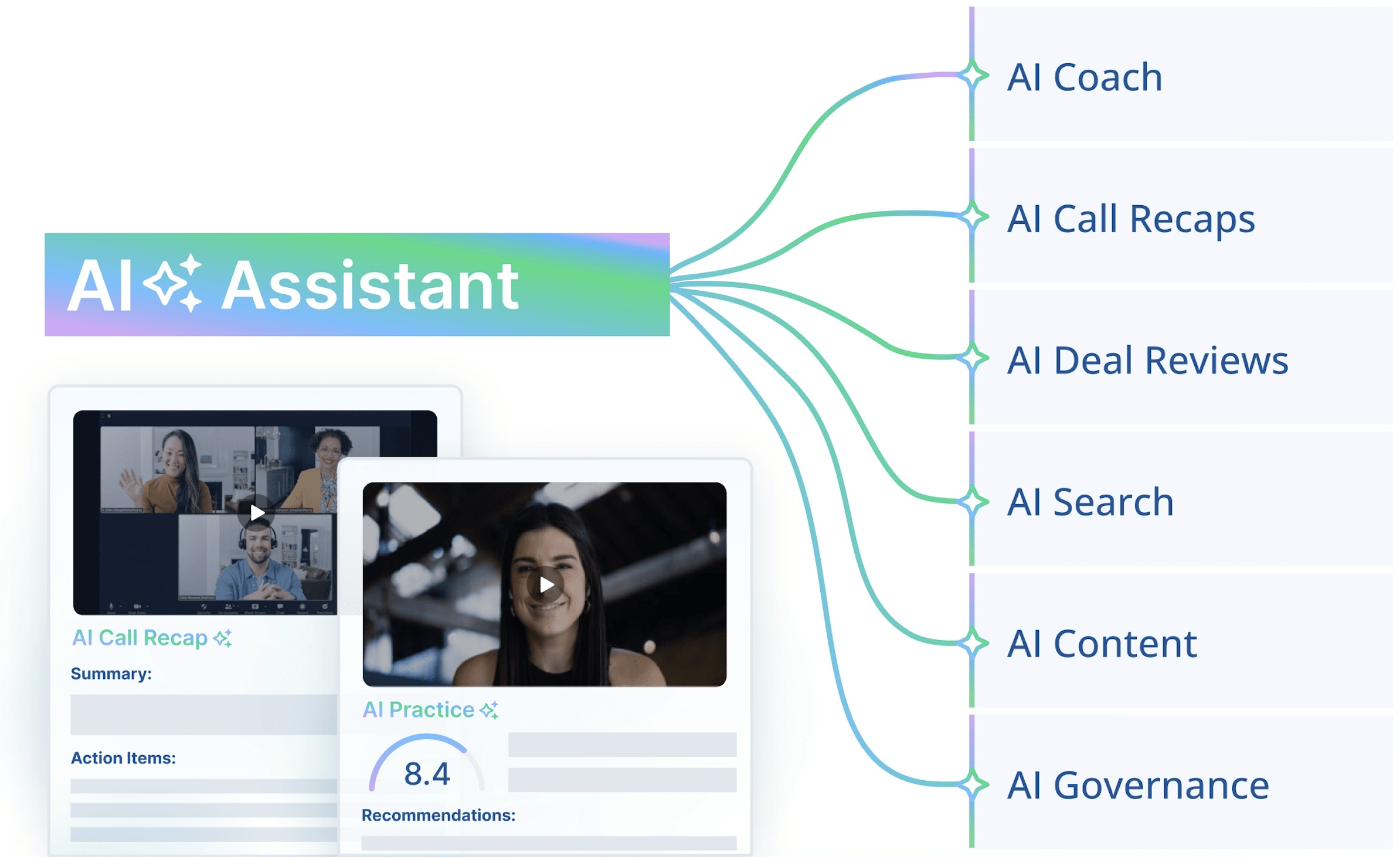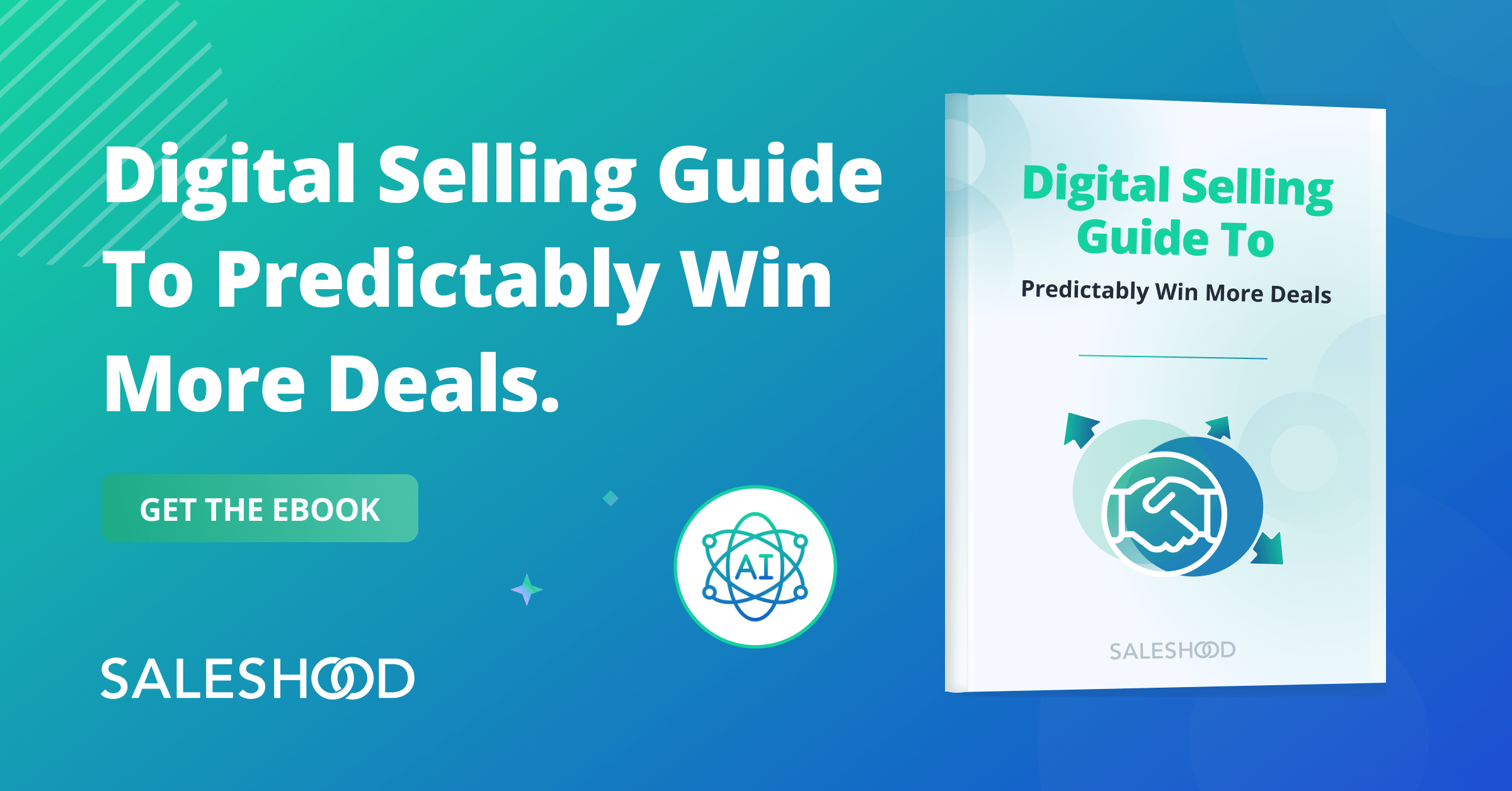It’s not always easy for sellers to hit their numbers, but there are actions you can take to get more wins. According to G2, 84% of sales reps achieve their quotas when their employer incorporates a best-in-class sales enablement strategy. That kind of data makes a compelling case for focusing on enablement efforts, but where do you start if you don’t already have a sales enablement program in place?
In this blog post, we’ll explore the question: “What is a sales enablement program?” and the core components that make it successful. Plus, you’ll learn how to track your sales enablement program’s effectiveness and align with key stakeholders. Take the information you learn here, apply it in your organization, and see how sales can transform.
What Is a Sales Enablement Program?
A sales enablement program is a strategy to help sales teams effectively engage with prospects and customers to increase revenue. It’s clearly an initiative that’s essential to sales, as 77% of companies with a sales force exceeding 500 people have dedicated sales enablement tools, programs, and practices. Organizations from across industries see the value in spending time and resources on sales enablement.
It’s not just about introducing a sales enablement platform—that’s a critical step, but layering the platform with a valuable process and strategy is key to making it work for the organization.
Your goal when building a sales enablement program is to give sellers the resources necessary to improve their sales effectiveness, including the knowledge, skills, and tools they need to connect and have an impact. When sellers are empowered with the right skills and information, they can more easily deliver the information and the experience that customers want.
This is increasingly important in a landscape where sales and buyer expectations are always evolving. To be successful, a sales enablement program needs to be regularly reviewed to ensure that it meets the needs of the sales team, adapts to changes in the market, and addresses customer expectations.
Sales Enablement Program Essentials: 4 Core Components
Once you demystify what a sales enablement program is, another question comes to the surface. What elements go into a program and how do you put these elements together? What sales enablement tools are necessary? You should plan to include these four critical elements.
Sales Strategy
Strategy is a critical component of a sales enablement program because it sets the direction and goals. A well-defined sales enablement strategy ensures the sales enablement program is focused on the right activities and that the resources invested are used effectively.
Sales Training
Only 10% of traditional sales training has a lasting impact on sales reps. A sales enablement program should include a variety of training and development opportunities to help salespeople acquire and retain the knowledge and skills they need. This may consist of product training, sales process training, and soft skills training.
Sales Content
Having access to high-quality, relevant, and up-to-date sales content is critical for sales success, especially when more people are doing research about products and services online. A sales enablement program should support reps in their efforts to have effective conversations with prospects and customers.
Many marketing teams are also ready and willing to help with this. According to the 2022 State of Content Marketing Report from Semrush, 27% of marketers say their key content goal is to increase sales and revenue. Collaborating with marketing is critical to ensure sellers have access to resources like case studies, product information, and industry insights.
Sales Technology
Putting all of these elements together can be a challenge if you’re attempting to use disparate platforms. Leverage a best-in-class sales enablement software so you have a system for measuring and analyzing sales performance, and you can evaluate the program’s effectiveness and make adjustments.
Sales Enablement Success: Five Steps to Ensure High-Impact
Once you have all the pieces in place, it’s time to start turning your plans into action. Follow these steps to craft and kick off a sales enablement program that continues to create value for the business.
-
Clearly Define Objectives
Setting goals may seem like an obvious first step, but it’s often more complex than you initially think. It’s essential to have a clear understanding of what you want to achieve through a sales enablement program and what outcomes you’re looking for. Then, there’s the matter of prioritizing those objectives and choosing what to focus on first.
-
Consider Business Strategy
Your sales enablement program should fit into the overall business strategy so that it works to support the growth and success of your entire organization. Before you set anything in stone, put your plans in context and ensure they complement and align to the vision for the organization.
-
Leverage Targeted and Relevant Content
Your business may be creating a lot of content, but are you maximizing its potential? Content should be tailored to the specific needs of the sales team and should be relevant to the products or services they are selling. You should also have processes in place to ensure that sales reps are accessing and using the content.
-
Plan to Assess and Adapt
Your sales enablement program isn’t something you can “set and forget.” Plan to use the sales enablement metrics you have to analyze your efforts and uncover opportunities for improvement. When you take an approach that encourages frequent evaluation and innovation, you support your sellers’ ability to do their best work and quickly recognize any gaps in sales performance or the sale enablement process.
-
Foster Collaboration
Like many other business initiatives, sales enablement programs are better when people in your organization come together. Encourage collaboration and communication between different teams, such as marketing, sales, and customer service to better align efforts and achieve common goals.
All parts of the organization should have an interest in sales enablement efforts because everyone that works within a business benefits from improving sales performance. The key to getting teams involved and invested in sales enablement is finding the right way to communicate and showcase its importance.
Sales Enablement Strategy: Align With Stakeholder Priorities
Getting C-Suite leaders on board and showing them the value of your sales enablement program is critical. It can make or break the effectiveness of your plans. Use these tips to connect your sales enablement efforts with stakeholders.
Clearly Communicate the Goals
Ensure everyone understands how your sales enablement program aligns with the overall business strategy and goals. If you don’t take this step, you might have trouble getting the resources and support you need for the initiative to be successful.
Involve Stakeholders
Include key stakeholders in the design and implementation of the sales enablement program when it makes sense. For example, you may want to loop in marketing to get their input on how and when content should be distributed.
Keep Stakeholders Informed
Keep all stakeholders up-to-date about progress and changes. Give them the opportunity to ask questions and share the details they need to know to understand the ongoing value. Look for efficiencies in this process, there is often a way within the sales enablement tools to automate stakeholder communication.
Share Metrics and Analytics
Share insights with stakeholders to demonstrate the impact of the sales enablement program. Understand what proof points are most important to each stakeholder before you go into these conversations.
Learn more about aligning with your stakeholders by reading Sales Enablement KPIs: How to Wow the C-Suite.
Sales Enablement Metrics: Correlate Measurement with Revenue Outcomes
Once you have your sales enablement program in place, how do you figure out what’s working and discover ways to improve it? Pay particular attention to these metrics and concepts to make the connections between your program and revenue.
Define and Measure Key Performance Indicators
Determine and measure key performance indicators (KPIs) that are directly related to revenue outcomes, such as sales pipeline, deal size, and close rate. Pay close attention to how any additions or changes to your program change the numbers. Click here to read our Measuring Leading and Lagging Indicators guide.
Use Data
Define who owns and manages data, then use that data to understand how the sales enablement program is impacting sales performance. This information will help you to make informed decisions about how to optimize the sales enablement program.
Connect Your Sales Enablement Program With the Buyer’s Journey
Sales enablement starts well before the pitch. Correlate your sales enablement program with your customer’s experience and journey. You can tailor the content to each stage and see how it makes an impact on your pipeline, as well as the way potential customers engage.
Sales Enablement Software: Choosing the Right Sales Enablement Platform to Support Your Program
There’s no one-size-fits-all approach to sales enablement, but there are best practices. Think about what you need to drive consistency, better performance, and faster revenue. Understanding these things is what will empower you to choose an effective sales enablement platform for your organization.
The best sales enablement platforms will provide just-in-time learning and content, empower you to analyze the impact, and give you the tools you need to get more sellers performing like your top-performing sellers.
Power Up Your Sales Enablement Program With SalesHood
If you want to take the next step and learn how to enable your teams with modern training, coaching, and content, talk to one of our sales enablement experts. SalesHood powers fast-growing companies with our purpose-built, all-in-one sales enablement platform by activating revenue teams to improve sales effectiveness and efficiency.
Want more sales enablement program insights? Make one of these posts your next read:
Sales Enablement Organizational Structure: Ownership, Reporting, and Ratios



